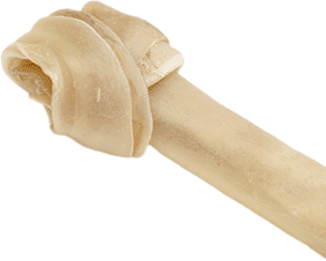


When you become the owner of a puppy, there are several things you should do to encourage its overall wellness, like making sure it gets plenty of exercise, feeding it high-quality food, attending frequent vet checkups, and scheduling a spay or neuter appointment at the appropriate age.
Spaying or neutering your lab—or having a gonadectomy performed—is one of the best ways that you can ensure a happy and healthy life with your puppy. This procedure has proven to help reduce major health risks like cancer, eliminate unwanted pregnancy, and even assist with undesired behaviors in males.
If you plan on spaying or neutering your puppy, then the first thing you’ll have to do is find the right time to do it according to your Labrador’s age.

Spaying, or ovariohysterectomy, is a procedure specific to females that refers to removing her reproductive organs, including her ovaries and uterus. After this, she’ll no longer be able to reproduce and won’t have a heat cycle anymore.
Neutering, or orchiectomy, is the procedure specific to males that refers to removing both testicles so that he is unable to reproduce anymore. Neutering helps control reproductive urges and suppress unwanted behaviors like aggression.
Although this procedure has proven to increase your lab’s general health, having this procedure done too early in your puppy’s life could actually increase health risks. Some veterinarians believe that six months old is a good time to spay or neuter, but one study found that doing so this early could increase the likeliness of joint disorders and certain cancers in adulthood.
According to the American Kennel Club’s Canine Health Foundation, large-breed dogs like Labradors should be spayed or neutered after puberty. This is typically when he or she is more than 45 pounds and between 9 to 15 months old.
Before you set the appointment, be sure to speak with your vet about the right time for your puppy based on its health, gender, and size.
There are several health benefits to spaying or neutering your Labrador puppy. In doing so, you’ll help prevent any unwanted behaviors or illnesses that often come with reproductive animals.
An unspayed female lab with unspayed puppies can have up to 67,000 puppies within six years of the mother’s lifespan. But even if you plan on keeping a litter or two, females can have up to 12 puppies per litter—so it can get hectic and expensive keeping up with all of their behaviors, attention needs, and health requirements.
Usually, breeders will ask that you sign a form that promises that you will spay or neuter your puppy when it’s of age. This is to help prevent overpopulation, unsafe breeding practices, and unwanted puppies in the future.
Did you know that getting your Labrador spayed or neutered increases its longevity? It’s true: their lifespans increase by 13.8% in males and 26.3% in females!
A gonadectomy—a general word used for the sterilization procedure—not only increases your puppy’s lifespan, but it also reduces significant health risks, like pyometra.
Pyometra is one of the most prevalent, potentially life-threatening uterine infections that are specific to labs. The good news is that spaying or neutering ultimately reduces the risk of contracting this infection! Males will also have a decreased risk for testicular cancer, and females are less likely to get mammary, uterine, ovarian, or cervical tumors.
When a male lab enters adulthood, he might begin exhibiting some unwanted behaviors that come with puberty, such as:
Neutering is the most effective way to reduce these habits. Additionally, females will stop going into heat throughout the year, which will eliminate howling and bleeding during her reproductive seasons.
Spaying or neutering is one of the most common pet surgeries in the world. Not only does it help reduce unwanted pregnancies, but it also has been proven to aid with behavioral issues and lesson significant health risks well into adulthood. The best time to spay or neuter your lab would be once it hits puberty, which is usually between 9 and 15 months old. Doing it too early can pose new health risks, so it’s best to discuss your puppy’s options with your breeder and trusted veterinarian.
If you’re looking to add a Labrador puppy to your family, then consider visiting or taking a look at Snowy Pines White Labs, a top-notch facility that specializes in breeding the purest English lab puppies with the best temperaments and bloodlines. At Snowy Pines, all puppies are treated like family—so that they are ready to join yours the day you take them home. Contact Snowy Pines today!
That is wonderful!! We are glad this blog helped you!!
Comment by Snowy Pines White Labradors on June 3, 2020 at 9:36 am